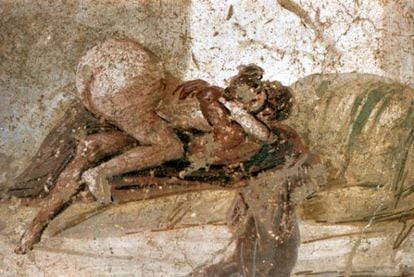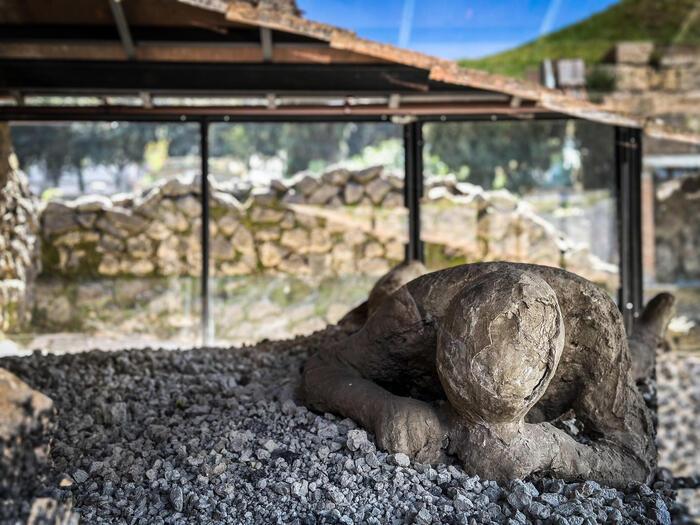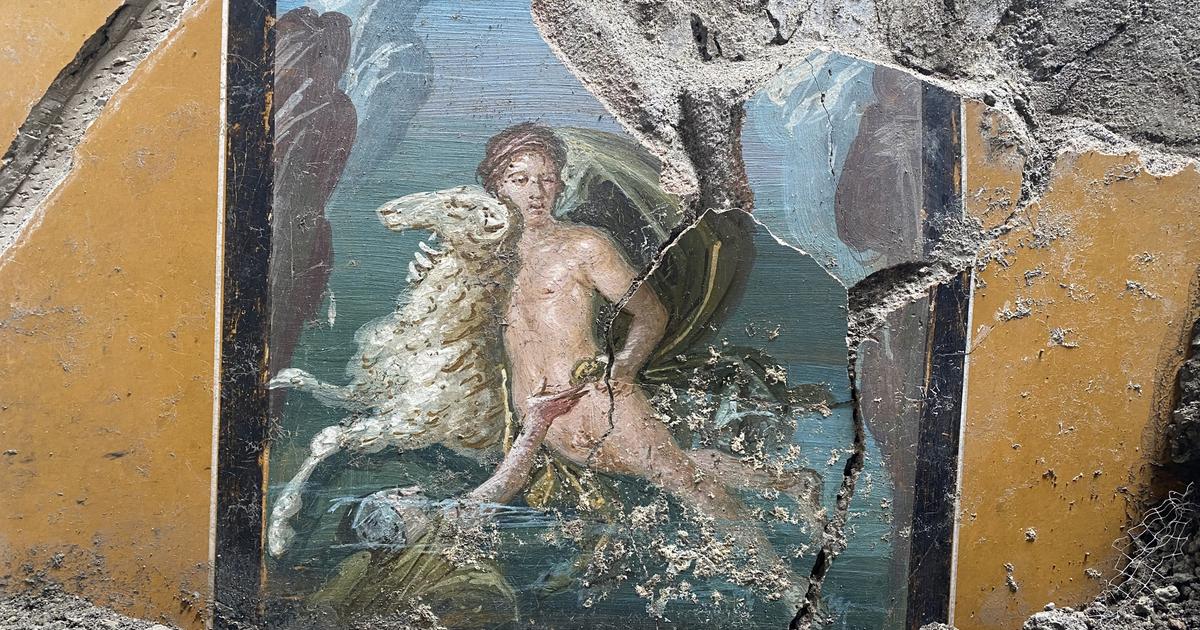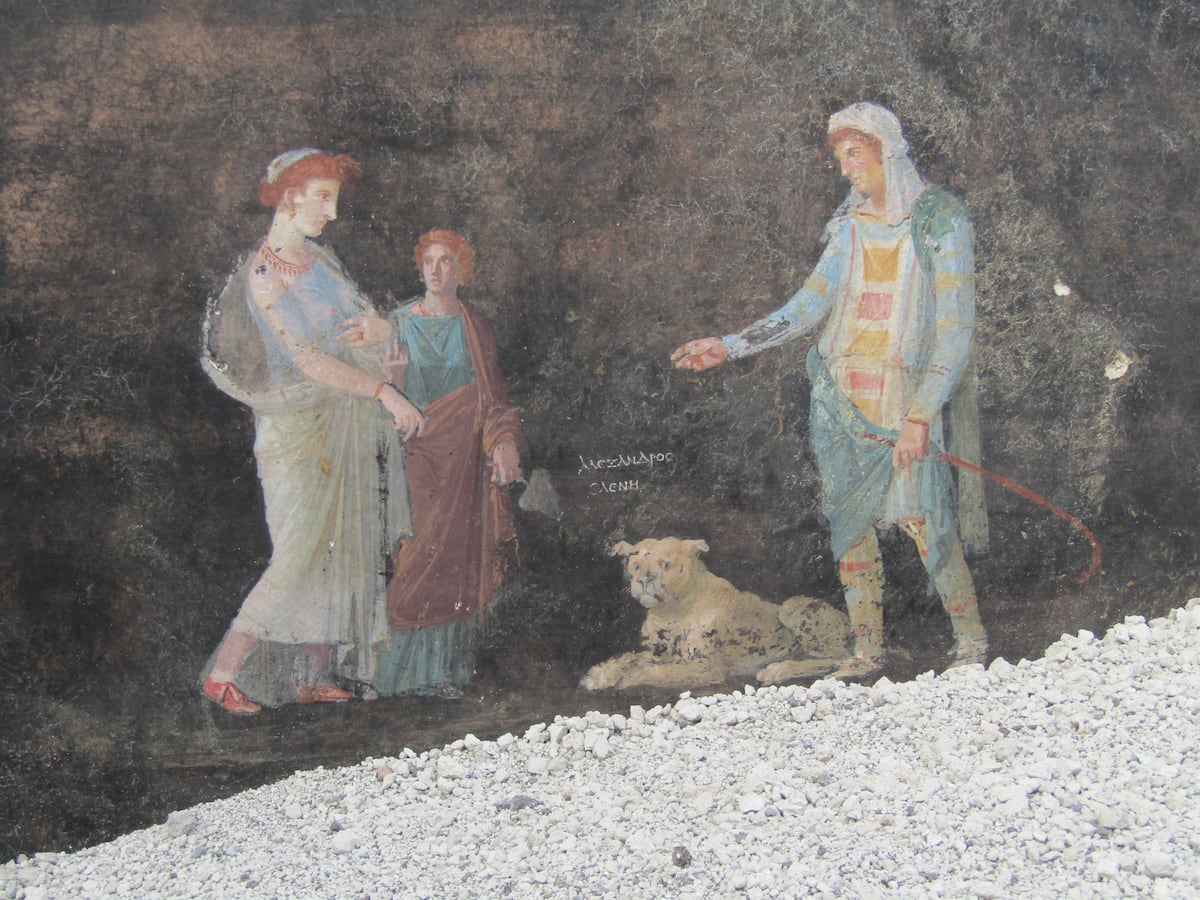The most famous volcanic eruption in history occurred two months after the date that until now was believed.
A recent scientific study certifies that the fury of Vesuvius devastated Pompeii between October 24 and 25 of the year 79 and not in August, as was clearly maintained until 2018. It was then that scholars began to suspect that something was not right in the times.
An inscription in charcoal, with an autumn date, discovered on the wall of a house, began to sow doubt.
There were already other clues pointing in the direction of a misdating.
For example, petrified corpses were too warm for summer, wearing woolen garments and long jackets that covered their bodies.
More information
The dead of Pompeii narrate the life of the Roman city destroyed by Vesuvius
Now all these assumptions have been confirmed by extensive research, which has just been published in the journal
Earth-Science Reviews
, and which has been directed by Italian scientists, who have studied in detail the apocalyptic scenes left by the terrible eruption to reconstruct all the phases of the terrible explosion.
Until now, in history books and guides, August 24 of the year 79 was indicated as the day on which Vesuvius erupted and buried Pompeii thanks to a letter that the writer of Ancient Rome Pliny the Younger, who was a witness Direct from the tragedy, he had sent Tacitus.
Although several experts already spoke of October 24 as the date of the catastrophe and pointed to errors in the transcription of the letter in the Middle Ages.
In 2018 these theories gained momentum when an inscription dated the "sixteenth day before the Kalends of November" was discovered on the wall of one of the houses that are emerging in the new excavations of the area called Regio V, which according to the current calendar corresponds to October 17.
That is, a week before the eruption.
If the sentence was written in October,
the eruption could not have occurred earlier.
To revoke the hitherto official date of August, scientists have also taken into account the discovery of a coin, a silver denarius bearing the image of Emperor Titus, with an inscription alluding to the month of September.
Plaster cast of the body of an inhabitant of Pompeii buried by the eruption of Vesuvius.Corbis
The international team led by the Italian Institute of Geophysics and Volcanology (INGV) has re-analyzed the facts and has corrected the calculation error of the immense time machine that is Pompeii to travel with greater precision to those days of antiquity.
The study has reviewed the historical, stratigraphic, sedimentological, petrological, geophysical, paleoclimatic and modeling aspects of the eruption, and, for the first time, they have all been combined to offer a more complete picture of the catastrophe.
The scenery of that fateful day remains: suddenly, around noon, when the inhabitants of the cities to the south of Naples, such as Pompeii, Herculaneum and Stabiae were immersed in their activities, there was a very violent explosive eruption.
Lava, ash, and a flow of incandescent gas destroyed and somewhat frozen in time everything in their path, including houses, objects, and people.
One of the erotic murals from Pompeii that survived the eruption of Vesuvius in the year 79.Getty Images
Although Vesuvius is one of the most studied eruptions and one that has contributed the most to modern volcanology, there are still many questions.
For this reason, the study has been approached from a multidisciplinary approach.
Thus, scientists have confirmed that the ashes flew thousands of kilometers and reached Greece.
The investigation also explains that the eruption occurred in eight phases and the characteristics of each one have been reconstructed: "The first was very violent and raised a column of smoke up to eight kilometers high, which spread the pyroclastic material in areas nearby”, reads the text.
Likewise, the INGV volcanologist and co-author of the research, Domenico Doronzo, explained that the new study "will improve the applicability of prediction models, from precursor phenomena to the impact of various eruptive and depositional processes".
“The spirit of our work was to understand how an event from the past can be a window to the future, opening new perspectives for the study of similar events that may occur tomorrow.
This study will improve the applicability of the prediction models and will help reduce the vulnerability of the areas and the numerous infrastructures exposed to volcanic risk, not only in the immediate vicinity of the volcano, but - as Pompeii teaches us - even hundreds of kilometers from it. Doronzo points out.









